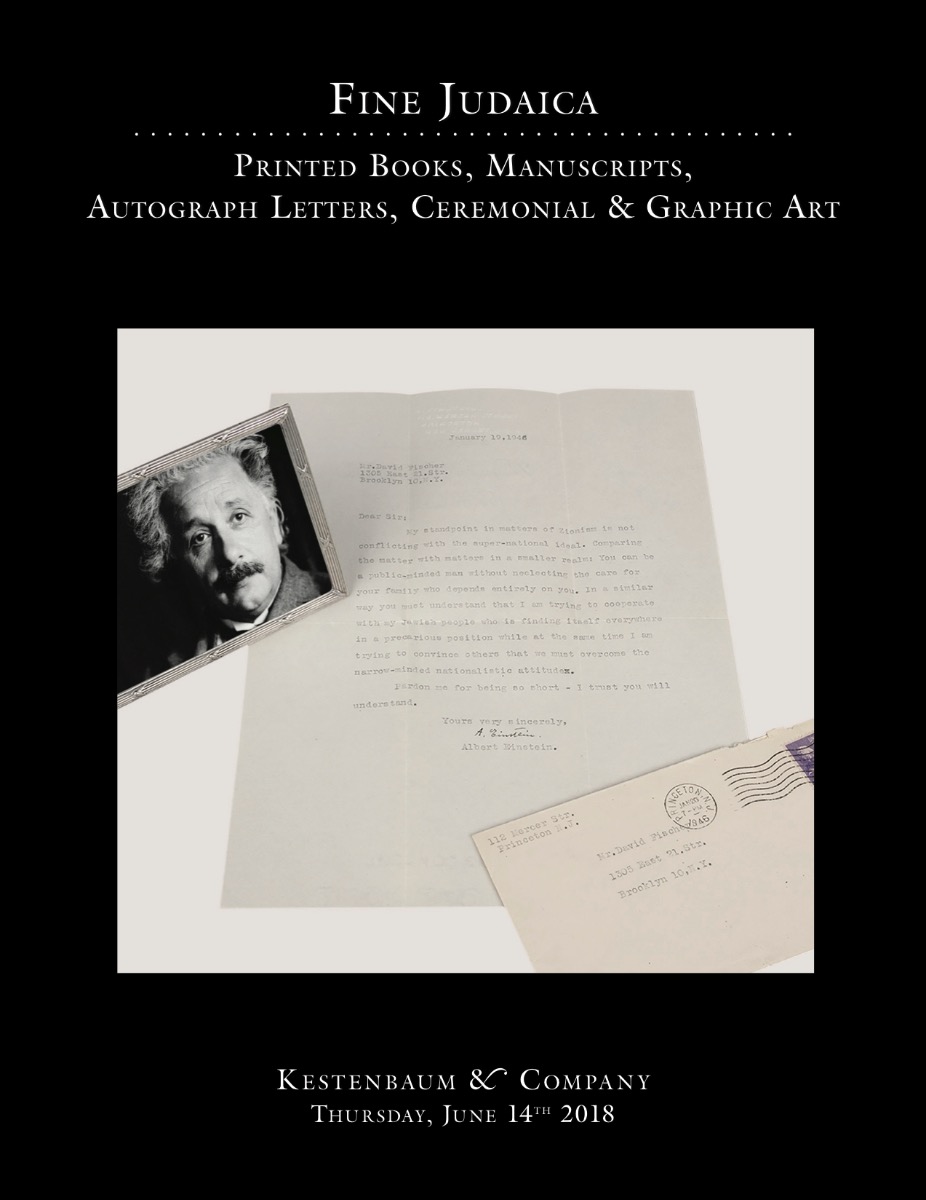Holdall with three instruments

AUCTION 76 |
Thursday, June 14th,
2018 at 3:00 PM
Fine Judaica: Printed Books, Manuscripts, Autograph Letters, Ceremonial & Graphic Art
Lot 377
SEPHARDIC MOHEL’S COMPENDIUM
Holdall with three instruments
19th-century
Est: $10,000 - $15,000
But for the whistle and the rattle (used for Purim?) - these instruments are said to have been used as a set for B’rith Mila, that is, circumcision utensils for a Mohel. The shield, which is movable to fit in the Holdall is of a very unusual form. We did not succeed to locate a similar shield for B’rith Mila in public collections such as those of the Jewish Museums in Amsterdam, Curaçao, or New York. However, this set was exhibited as part of a special exhibition on the theme of B’rith Mila at the Morris E. Curiel Museum in Caracas, Venezuela in 2015.
As to the profession of Mohel for the small Jewish Communities of the Caribbean, they were served by a few Mohalim that traveled to the location where a baby boy was to be circumcised. Due to the travel time, this often resulted in the postponement of the Brith after the prescribed eight day after birth.
The set, the rattle and the whistle, originates from a Venezuelan owner, a descendant of the Maduro family of Curaçao. This family came to Curaçao from Amsterdam around 1670 as is described by I.S Emmanuel in “The Precious Stones of Curaçao” (1957) p. 210. Jewish settlement in Venezuela started after the abolition of the Inquisition in 1819 and Venezuelan Independence in 1821. An influx of Portuguese Jews from Curaçao, especially to Coro started around that time, looking as they were for trade opportunities since the economy in Curaçao had sharply declined.
This Holdall, the three instruments inside, the rattle and the whistle were most likely produced in Paris in the 19th century. Foudrals, Holdalls, like this one, were produced with a technique using mother of pearl (nacre) and copper or silver and are called Palais Royal after the location in Paris where several of the workshops, specializing in this technique of combining precious metals with mother of pearl were established during the 19th century.
<<With grateful thanks to Dr. J.J. Cahen (director-emeritus of the Joods Historisch Museum, Amsterdam) for providing the research description above.>>
